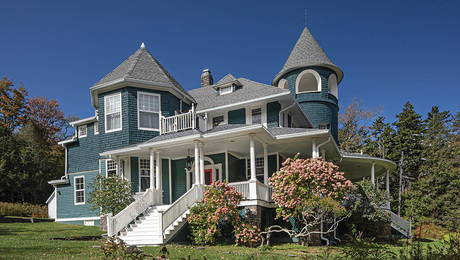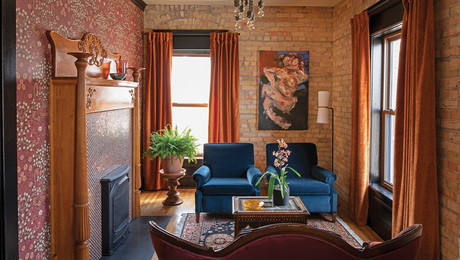Paul Scialla: Wellness Real-Estate Pioneer
Founded by this former Goldman Sachs partner, the International WELL Building Institute (IWBI) has developed a standard for healthy buildings that could do for occupant health what LEED has done for sustainability.

Web Extra: Extended Taligate Interview
What led to your decision to form the wellness real-estate company Delos and, subsequently, IWBI?

When I first conceived this idea seven years ago, the green-building movement and the word sustainability kept popping up, but I didn’t see anyone talking about biological sustainability or focusing exclusively on how these buildings were impacting the people inside of them. While conducting R&D in health and wellness in the built environment, we quickly realized the need to share this research globally and create a standard focused on human sustainability.
The WELL Building Standard scores buildings on 102 individual metrics in seven categories: air, water, nourishment, light, fitness, comfort, and mind. What’s behind this broad approach?
Each metric is designed to address issues that impact the health, comfort, or knowledge of occupants. Many are supported by existing government standards or other standards-setting organizations. Some are intended to change behavior through education and corporate policy or culture. All are meant to provide information and support for making positive lifestyle choices.
Many WELL components are widely accepted good-building practices. Others, like circadian lighting, probably aren’t even on the radar of many builders. Why are they important?
The WELL Building Standard and the programming associated with it is focused on the impact a building has on occupants, and that’s something that all of us involved in the built environment should be thinking about. Collectively shifting the focus to a celebration of the ways in which buildings and interior design can serve the people in those structures—who are the fundamental focus and reason those spaces even exist— represents a tremendous opportunity for the building community to bring a new wave of value to clients.
Do you see the WELL Building Standard facing the same challenges that LEED did in gaining acceptance?
Going into this, we knew that having LEED buildings certified by a third party, the Green Building Certification Institute (GBCI), has been crucial to LEED’s worldwide adoption. As a way to accelerate and drive the global adoption of the WELL Building Standard in the same way, we forged a formal collaboration between IWBI and GBCI early on to reinforce the alignment between health, wellness, and sustainability. IWBI’s partnership with GBCI has been extremely important in taking the standard global, as GBCI guarantees a best-in-class certification infrastructure that helps make it seamless for professionals and organizations already using LEED.
An individual’s health can be affected by so many factors. Aren’t builders who make health claims opening themselves up to a liability beyond their control?
We don’t make claims about people’s improved health. We’ve spent years reviewing, analyzing, and compiling studies and the latest research on how elements of a building impact people’s health and well-being. We’ve been able to answer how a building can contribute generally to health and wellness, but there’s still a lot of work that needs to be done.
I can say that one year after its global corporate headquarters was certified, CBRE published a post-occupancy study that found 92% of respondents believe the new space has created a positive effect on their health and well-being and 83% feel more productive.
How many buildings have been certified, and how many are in the process?
Prior to launching version 1.0 of the WELL Building Standard, we conducted a two-year pilot program, during which several projects achieved WELL Pilot Certification, including CBRE’s headquarters in Los Angeles, LYFE Kitchen restaurants in Tarzana, Calif.; Evanston, Ill.; and Park Meadows, Colo., and the Phipps Center for Sustainable Landscapes in Pittsburgh. Currently, there are more than 10 million sq. ft. of commercial, institutional, and multifamily projects in the United States and globally that are registered or certified for the WELL Building Standard.
Will the standard extend to homes?
Version 1.0 is optimized for commercial and institutional projects, but a multifamily pilot is now underway. At the moment, there are at least four projects and over 1 million sq. ft. of new multifamily construction awaiting enrollment in the new pilot. There are no current plans to include single-family homes.
Illustration: Jacqueline Rogers

























